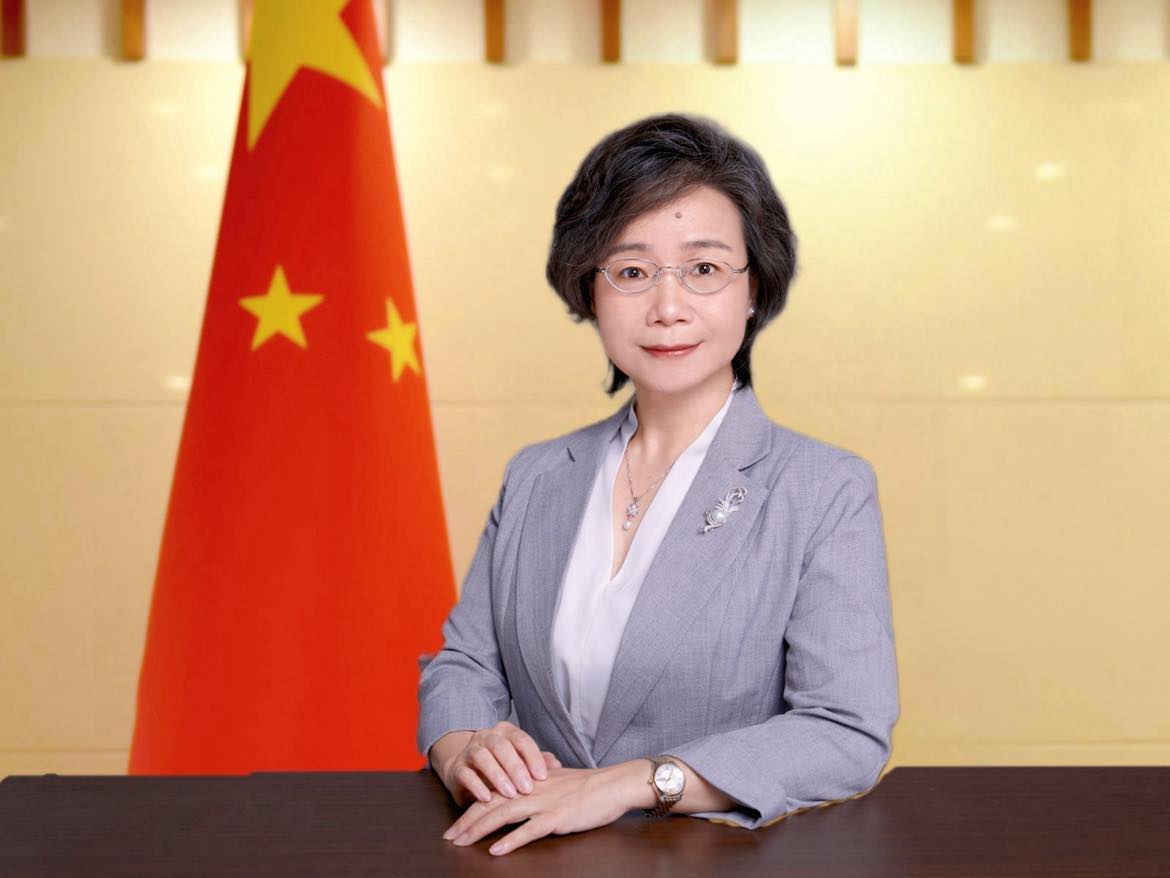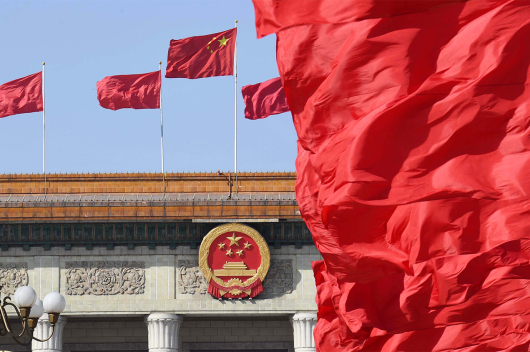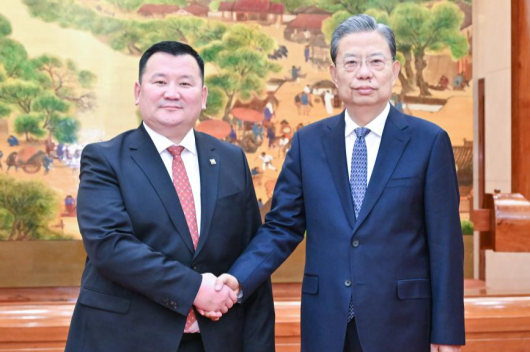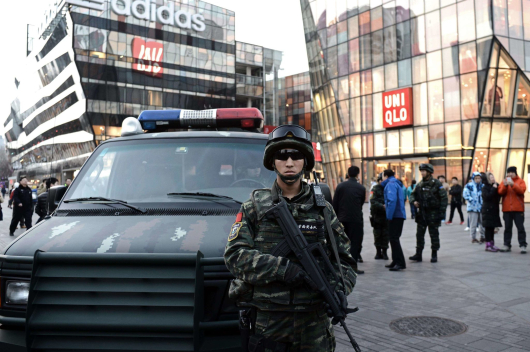This year marks the 10th anniversary of President Xi Jinping’s proposal of building a community with a shared future for mankind. China recently released the white paper A Global Community of Shared Future: China’s Proposals and Actions, which elaborates on the connotation and best practices of the concept and allows people from all walks of life and the international community to better understand the far-reaching significance of the concept and the goals of major-country diplomacy with Chinese characteristics.
Ten years ago, when faced with the profound question of the world, history and the times, “What is happening to the world and what should we do?”, President Xi Jinping proposed the concept of a community with a shared future for mankind with the broad strategic vision, outstanding political wisdom and strong sense of responsibility as a leader of a major country and party. He pointed out the right direction for global development at the turning point of history and built a strong consensus for international cooperation at a time of complex changes.
Over the past decade, the concept of a community with a shared future for mankind has been developing, while following the right path amid rising changes and moving forward in the face of crises and challenges, and it has achieved significant results and emerged as a thought that leads the times.
From state visits to multilateral summits, President Xi Jinping has elaborated on this important concept on multiple occasions and helped the international community understand more about the idea. Thus a science-based theoretical system is established that takes an open, inclusive, clean, and beautiful world that enjoys lasting peace, universal security, and common prosperity as the ultimate goal, the common values of humanity as the target, a new type of international relations as the fundamental path, Belt and Road cooperation as the platform for action, and the Global Development Initiative, the Global Security Initiative and the Global Civilization Initiative as the important pillars.
The concept of a community with a shared future for mankind has become a key strategy for the global response to major challenges of health, climate change, cybersecurity etc. It has been written into the resolutions of the United Nations General Assembly for six consecutive years and included in resolutions or declarations of multilateral mechanisms many times. The idea has gained understanding and support from the international community, especially from developing countries. As a platform for action for the concept, Belt and Road cooperation is also celebrating its 10th anniversary this year. China has signed cooperation documents with 152 countries and 32 international organizations and set up more than 3,000 cooperation projects.
Data from the World Bank shows that the Belt and Road Initiative will generate USD 1.6 trillion in global revenue every year and help nearly 40 million people get out of poverty by 2030. The turbulent international and regional landscape , resurging Cold War mentality, and increasingly intense bloc confrontation in recent years have wreaked havoc on the world economy. Despite the challenges, China’s economy recovery is making steady progress. In the first half of this year, China’s GDP grew by 5.5%. The World Bank, the OECD, and the IMF all predict that China’s economic growth will exceed 5% in 2023.
China’s independence policy, abundant macro policy tools, and broad market prospects allow the IMF and other institutions to predict that China will contribute more than 30% to global economic growth in 2023 and remain the main engine of future growth. China and Mongolia share geographical proximity, cultural connectivity, and people-to-people sincerity.
The principle of amity, sincerity, mutual benefit and inclusiveness and the policy of forging friendship and partnership with neighboring countries have found their best practices here in Mongolia. The close cooperation and fruitful results of high-level visits, economic and trade exchanges and cultural and people-to-people connectivity open a new chapter of building a community with a shared future for the two countries. A community with a shared future for the two countries benefits from the strategic guidance of the two countries’ leaders. Mongolian President Khurelsuh and Prime Minister Oyun-Erdene reached important consensus with President Xi Jinping during their visits to China, setting the course forward for the two countries.
High level leaders of the two sides built the tree engines that will drive the future of the two countries by seeking greater synergy between the Belt and Road Initiative and the Steppe Road Plan, between the Global Development Initiative and Mongolia’s New Recovery Policy, and between China’s two-step development strategy and Mongolia’s “Vision-2050” long-term development policy. A community with a shared future for the two countries benefits from the close cooperation in economy and trade. The strong mutual complementarity and huge potential for cooperation make China and Mongolia close neighbors and partners that cannot be separated. In 2022, despite the pandemic, the bilateral trade between the two countries reached USD 12.2 billion.
Trade in the first three quarters this year increased by 30% year on year, growing closer to the USD 20 billion goal. Mongolian coal export this year is expected to exceed 5,500 tons to a historic new high. Mongolian estimation shows that, for every 1% of economic growth of China, the export of Mongolia in 6 months to a year will increase by 4% and the GDP by 0.6%. A community with a shared future for the two countries benefits from the people-to-people connectivity. The traditional friendship of the two peoples rolls into the new era with even greater vitality. During the pandemic, the donations of sheep and tea became a story well-told among the public. China and Mongolia strengthened cooperation in response to desertification by setting up the sand stabilization pilot area in Mongolia and the China-Mongolia Desertification Prevention and Control Center, which have become a new example of environmental protection for the two countries.
After the pandemic, the “Years to Visit Mongolia” program attracted flocks of Chinese tourists. The international departure hall of the Erenhot railway port has been busy with all the passengers. It is the BRI that provides 21,000 households in three sums of western Mongolia with stable electricity from China. The man in charge of the grid won the special contribution medal of Mongolia for four consecutive years. The Xinjiang Beixin Road & Bridge Group built a high-quality road stretching from Arvaikheer to Bayankhongor in western Mongolia. The manager of the company’s Mongolian office was awarded the Order of the Polar Star by the President.
China is about to hold the Third Belt and Road Forum for International Cooperation. We are ready to uphold the principle of extensive consultation, joint contribution and shared benefits to push forward the Belt and Road cooperation with Mongolia and build a road of peace, friendship, and prosperity that brings benefits to the world. Over the decade, the successful practices of a community with a shared future for mankind have proved that the historical trend of human development is unstoppable. In a global village where all share the same future and interests, no one can stay immune in crises or resolve all the problems. It is solidarity and cooperation, not the zero-sum game mentality, that bring a better world and welfare to every ordinary person living in this global village.
Ambassador Extraordinary and Plenipotentiary of the People’s Republic of China to Mongolia Shen Minjuan
 3,575.44
3,575.44












Related News